
Review on 📡 High-Precision GPS Receiver Module NEO-M8N BDS Compass for Drone Microcontroller, APM PIX PX4, I2C Compatible with MWC - Integrated APM Flight Control Pixhawk Navigation Module by Bradley Wacks

Ideal for use with Raspberry Pi. Be careful with Arduino!
This little device is very valuable. It appears to be using a real U-Blox chip under a metal can and white label. Most features of the U-Center software appear to work well. I connected mine to a Raspberry Pi 2 to create an NTP time server. The PPS connection offers an accuracy of tens of nanoseconds. To do this, the Raspberry Pi must be configured to receive a PPS signal on one of the GPIO pins. I used the "GPSD" and "NTPD" packages, which work fine with the device. Don't forget to connect to the TX and RX serial lines, as the GPSD appears to update the time and other parameters, allowing for a quick "cold" correction when first turned on. A few words about power and levels. The module on the board works from 3.3 V! However, this board has a 5V > 3.3 volt regulator to allow for power delivery from the USB port. The Vcc pin is also connected to the input of the regulator. ***UPDATED*** The module can only be operated with 5V on the Vcc pin. The onboard voltage regulator does not work properly when the Vcc pin is connected to 3.3V. It seems to be working fine, but 3D stuck errors and other erratic operations are very common. Likewise. Running the board with 3.3V on the Vcc pin exposes the device that needs the 5V power supply on its 3, Provides 3V output when the USB port is connected to a computer to program the board. Be careful. The TXD, RXD and PPS pins operate at 3.3V as the I/O high! Reading the datasheet at the link in the listing clearly indicates that these interface pins are NOT 5 volt solid. This means that if you use a device (like the Arduino) that uses 5V as a logic "high" to connect to an input of that device (RXD), you are likely to damage the chip. This may work for a while, but it puts a load on the chip beyond the absolute maximum values. The PPS and TXD pins are outputs. So if you connect them to a device that expects a 5V input it will not cause any harm, but the data is very sensitive to noise. and corrupted data on the receiving device (e.g. Arduino). It seems to work fine, but you'd be better off investing in a cheap 5V to 3.3V bidirectional level converter chip for a few bucks if you want to interface with an Arduino. For the Raspberry Pi, however, the device is perfect in terms of voltage levels! You will likely damage the chip. This may work for a while, but it puts a load on the chip beyond the absolute maximum values. The PPS and TXD pins are outputs, so connecting to a device that expects a 5V input will not cause harm, but the data is very sensitive to noise. and corrupted data on the receiving device (e.g. Arduino). It seems to work, but you'd be better off investing in a cheap 5V to 3.3V bidirectional level converter chip for a few bucks if you want to interface with an Arduino. For the Raspberry Pi, however, the device is perfect in terms of voltage levels! You will likely damage the chip. This may work for a while, but this will stress the chip beyond its absolute maximums. The PPS and TXD pins are outputs, so connecting to a device that expects a 5V input will not cause harm, but the data is very sensitive to noise. and corrupted data on the receiving device (e.g. Arduino). It seems to work fine, but you'd better invest in a cheap 5V to 3.3V bidirectional level converter chip for a few bucks, if you want to connect to an Arduino. For the Raspberry Pi, however, the device is perfect in terms of voltage levels! However, the data is very sensitive to noise and data corruption on the receiving device (e.g. Arduino). It seems to work fine, but you're better off investing in a cheap 5V to 3.3V bidirectional level shifter chip for a few bucks. if you want to connect to Arduino. For the Raspberry Pi, however, the device is perfect in terms of voltage levels! However, the data is very sensitive to noise and data corruption on the receiving device (e.g. Arduino). It seems to work fine, but you'd better invest in a cheap 5V to 3.3V bidirectional level converter chip for a few bucks, if you want to connect to an Arduino. For the Raspberry Pi, however, the device is perfect in terms of voltage levels! However, you'd be better off investing in a cheap 5V to 3.3V bidirectional level converter chip for a few bucks if you want to connect to an Arduino. For the Raspberry Pi, however, the device is perfect in terms of voltage levels! But you'd be better off investing in a cheap 5V to 3.3V bidirectional level converter chip for a few bucks if you want to connect to the Arduino. For the Raspberry Pi, however, the device is perfect in terms of voltage levels! if you want to connect to an Arduino. For the Raspberry Pi, however, the device is perfect in terms of voltage levels! But you'd be better off investing in a cheap 5V to 3.3V bidirectional level converter chip for a few bucks if you want to connect to the Arduino. For the Raspberry Pi, however, the device is perfect in terms of voltage levels! if you want to connect to an Arduino. For the Raspberry Pi, however, the device is perfect in terms of voltage levels! But you'd be better off investing in a cheap 5V to 3.3V bidirectional level converter chip for a few bucks if you want to connect to the Arduino. For the Raspberry Pi, however, the device is perfect in terms of voltage levels!
- Quick start guide
New products
Comments (0)
Top products in 🖥️. Single Board Computers
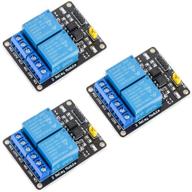
🌐 MCIGICM 2 Channel DC 5V Relay Module: Optocoupler Low Level Trigger Expansion Board for Arduino UNO R3, DSP, ARM, PIC, AVR, STM32, Raspberry Pi

11 Review
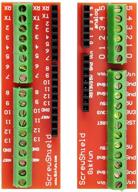
Gikfun Screw Shield Expansion Board: Enhance Arduino UNO R3 with the EK7007 Add-On

11 Review
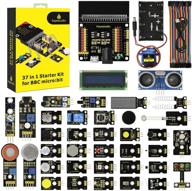
🎁 Ultimate BBC Micro bit Sensor Starter Kit: Keyestudio 37-in-1 Box with Tutorial, Compatible with V1.5 & V2, Gift for Kids and Adults (Microbit Board Not Included)

11 Review
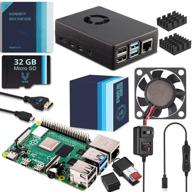
Vilros Raspberry Pi 4 4GB Complete Starter Kit - Black Fan-Cooled Aluminum Case for Heavy-Duty Performance

12 Review
Another interesting products
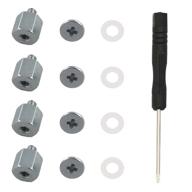
M.2 Screw Kit: Easy Mounting for NVMe SSDs on ASUS Motherboards

19 Review
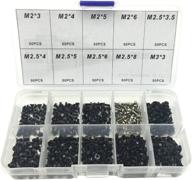
Comprehensive 500pcs Laptop Screw Kit Set for 🔩 IBM HP Dell Lenovo Samsung Sony Toshiba Gateway Acer

12 Review

🔧 Premium Repair Replacement Screws & Tools for MacBook Pro Retina 15"/13" - Complete Bottom Case Set

10 Review

🖥️ Helifouner 450-Piece Computer Standoffs Spacer Screws Kit: Ideal for Hard Drive, Motherboard, Fan, Power Graphics & Computer Cases

10 Review

